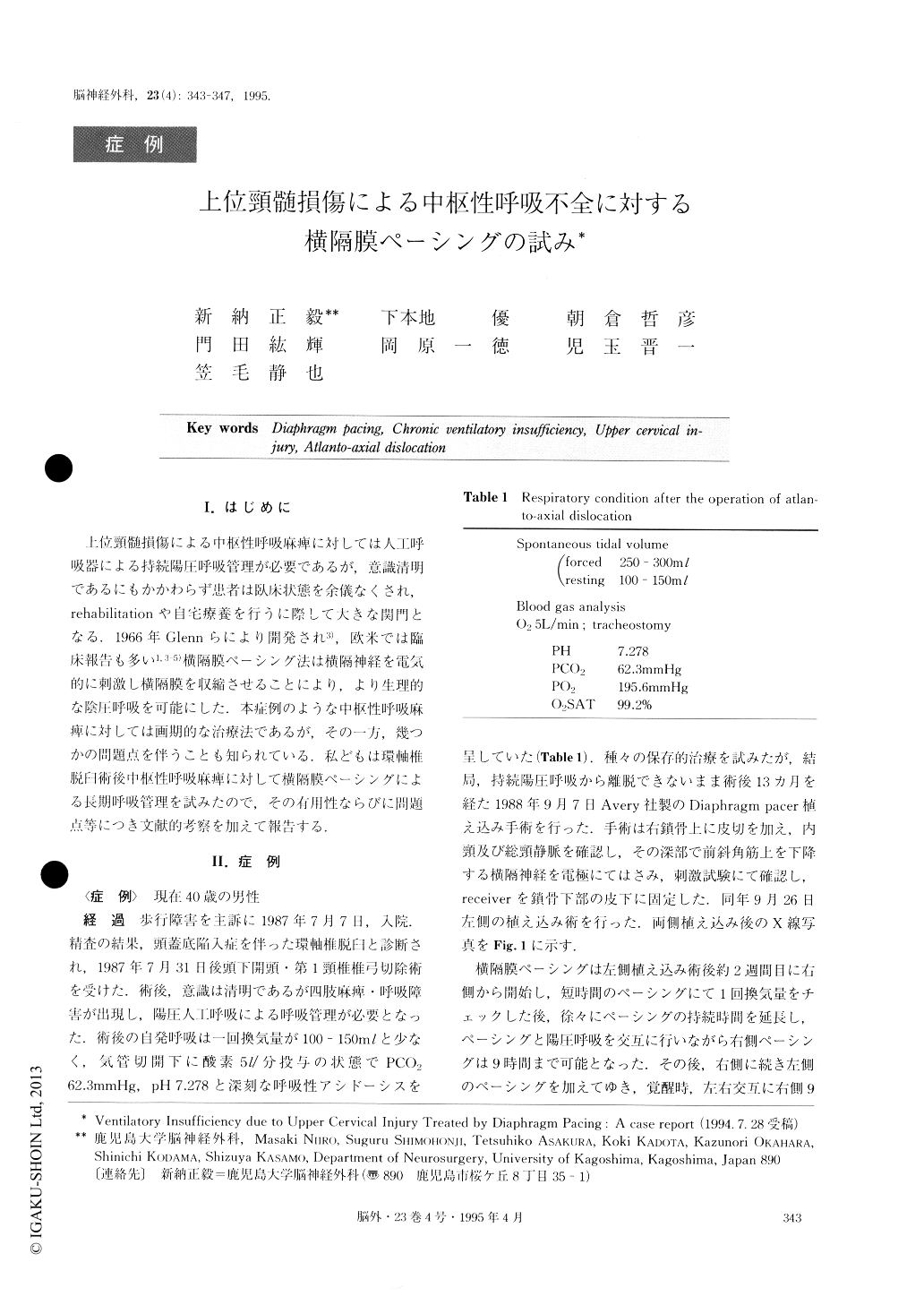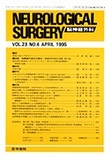Japanese
English
- 有料閲覧
- Abstract 文献概要
- 1ページ目 Look Inside
I.はじめに
上位頸髄損傷による中枢性呼吸麻痺に対しては人工呼吸器による持続陽圧呼吸管理が必要であるが,意識清明であるにもかかわらず患者は臥床状態を余儀なくされ,rehabilitationや自宅療養を行うに際して大きな関門となる.1966年Glennらにより開発され3),欧米では臨床報告も多い1,3-5)横隔膜ペーシング法は横隔神経を電気的に刺激し横隔膜を収縮させることにより,より生理的な陰圧呼吸を可能にした.本症例のような中枢性呼吸麻痺に対しては画期的な治療法であるが,その一方,幾つかの問題点を伴うことも知られている.私どもは環軸椎脱臼術後中枢性呼吸麻痺に対して横隔膜ペーシングによる長期呼吸管理を試みたので,その有用性ならびに問題点等につき文献的考察を加えて報告する.
A 33-year-old man suffered chronic ventilatory insuf-ficiency with tetraplegia after an operation for atlanto-axial dislocation. He was alert and his tetraplegia gra-dually improved. However, continuous mechanical ven-tilation was necessary for him. Thirteen months after the operation, a diaphragm pacer (Avery Laboratory Inc.) was implanted on the right phrenic nerve in the cervical region. Nineteen days after the implantation of the right side pacer, a left side diaphragm pacer was also implanted.
Diaphragm pacing was started two weeks after the second implantation. The pacing period was gradually prolonged and continuous pacing for 9 hours by the right side pacer and three hours by the left side pacer was able to be obtained. One year after implantation, twelve continuous hours of diaphragm pacing became possible. During diaphragm pacing, blood gas analysis was satisfactory and the patient could move sitting on a wheel chair, watch television and write letters using a word processor.
We were unable to achieve total ventilatory support for him using these diaphragm pacers. We thought that the main cause of our partial failure originated from the procedure used in implanting the electrode onto the phrenic nerve. Left side pacing needs higher amplitude than that used on the right side to obtain sufficient tid-al volume. The patient refused our continuing the left side pacing because of pain around the anterior chest and shoulder. Another probbem to be watched is dia-phragm fatigue. However, diaphragm pacing has been continued for six years and it has been useful in improv-ing his quality of life. Although there were some pro-blems and complications during treatment, we maintain that diaphragm pacing is a useful ventilatory support-ing system for selected patients with chronic ventila-tory insufficiency.

Copyright © 1995, Igaku-Shoin Ltd. All rights reserved.


